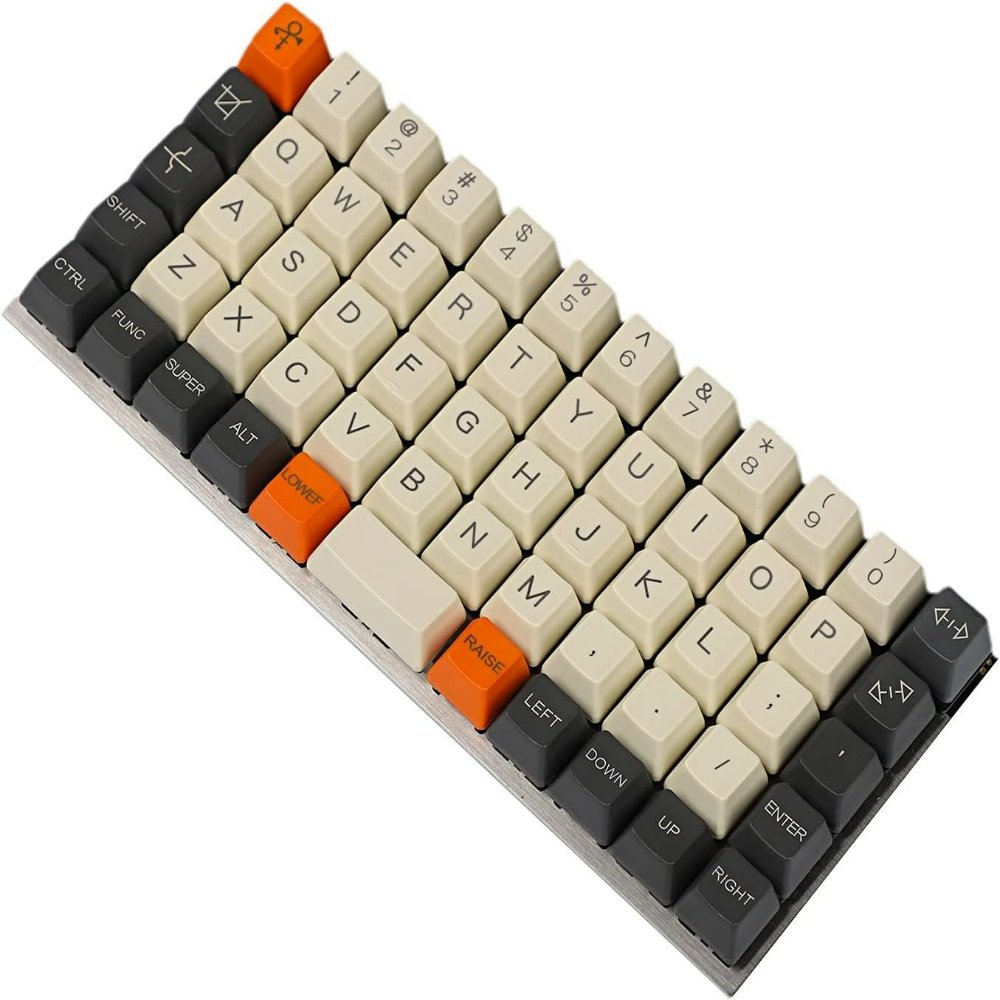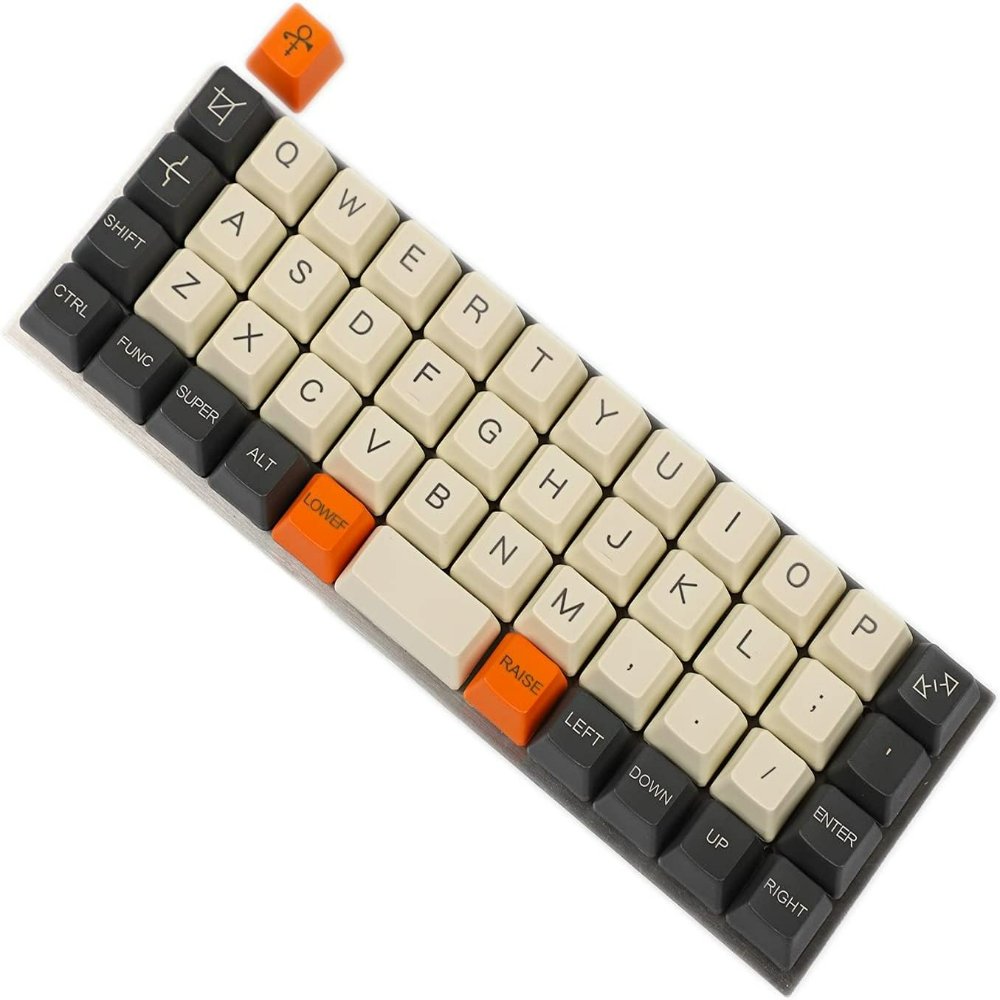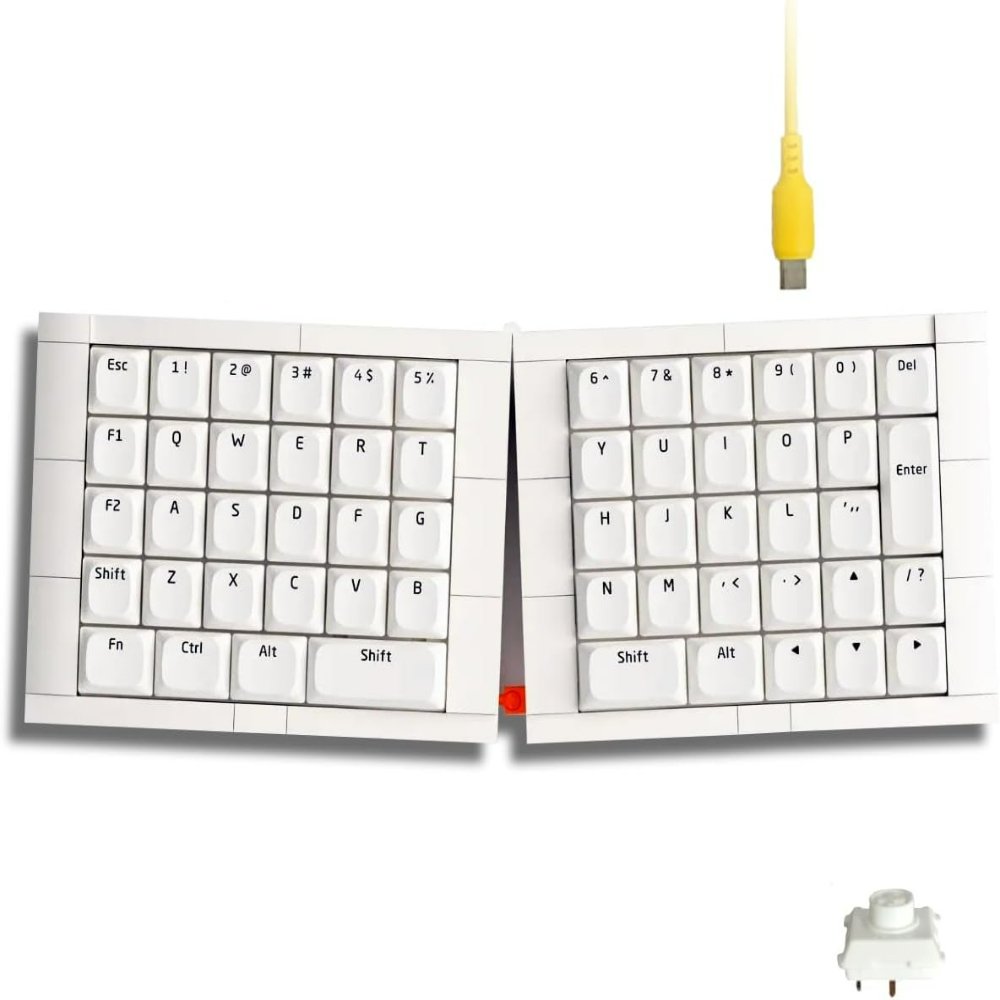Introduction to Ortholinear Keyboards
Ortholinear keyboards are gaining popularity among computer users. These keyboards differ from traditional ones in key arrangement. In an ortholinear keyboard, the keys align in a grid. This means the keys form straight columns and rows. Such a design aims to improve comfort and efficiency. It follows the natural motion of fingers, reducing finger travel. First-time users might find them unusual to use. But many report ease of use and comfort after a short adjustment period.
Traditional keyboards have staggered layouts. This means each row of keys is slightly offset from one another. This design dates back to typewriters. Ortholinear keyboards challenge this old design. They bring a fresh perspective to typing and keyboard layout. People from various sectors are now using ortholinear keyboards. Programmers, writers, and gamers appreciate their benefits.
The straight design helps maintain a more natural hand position. This can reduce strain and potential repetitive stress injuries. Users also enjoy customization. Many ortholinear keyboard models support programmable keys. This allows for a personalized typing experience. The ortholinear trend is not just about comfort, but also about control over one’s typing layout.

History and Evolution of Keyboard Layouts
The evolution of keyboard layouts is a story of both innovation and legacy. The journey starts with typewriters. Their staggered layout aimed to prevent mechanical jamming. Early computers adopted the same staggered layout for familiarity. However, as computing evolved, so did the demands for more ergonomic solutions. This led to the development of split and curved keyboards, looking to address comfort.
The introduction of ortholinear keyboards marked a shift from tradition to efficiency. These grid-like layouts reflect a modern understanding of ergonomics. They spotlight user comfort and precision. In a digital age where keyboards are essential, the reform for a better layout persisted. This struggle gave way to ortholinear variants. Users are now looking beyond standard designs, seeking improved typing experiences.
Despite criticism and skepticism, ortholinear keyboards grew in popularity. Enthusiasts and professionals alike have embraced the new form, leading to a broader acceptance. This change tracks a progressive push in computer ergonomics. It also demonstrates users’ desire for innovation and personalization in their tools. As computing moves forward, ortholinear keyboards stand as pillars of potential in user-focused design.
The Ergonomics of Ortholinear Keyboards
When we speak of ergonomics in keyboard design, we refer to the study of efficiency and comfort in a working environment. Ortholinear keyboards stand at the forefront of ergonomic design. Here are some key points that highlight their ergonomic benefits:
- Straight Key Columns: The vertical columns align with the natural resting positions of your fingers. This reduces the lateral movement that’s common with staggered layouts.
- Reduced Finger Travel: A grid layout means less distance for your fingers to travel from key to key. Shorter distances can reduce fatigue during extended typing sessions.
- Neutral Wrist Position: Because the keys align in straight rows and columns, your wrists can maintain a more natural, straighter position. This might lower the risk of wrist strain and injuries like carpal tunnel syndrome.
- Customizable Layouts: Many ortholinear keyboard models come with programmable keys. Users can assign functions to keys that best suit their typing habits. This customization leads to a more personalized and efficient typing experience.
- Learning Curve: While the benefits are clear, shifting to an ortholinear layout can require an adjustment period. But users typically report increased comfort and performance once they adapt.
Overall, ortholinear keyboards offer a promising alternative to traditional keyboard designs. By focusing on the natural movements and positions of the hands and fingers, they provide an ergonomic advantage that’s hard to dismiss. Their increased adoption rates suggest that the ergonomic features of ortholinear keyboards resonate with many users seeking a more comfortable typing experience.

Popular Ortholinear Keyboard Models
The market for ortholinear keyboards is vibrant, with several models standing out due to their design, functionality, and popularity. Users interested in switching to an ortholinear layout have several options to consider, each with its own set of features catering to different preferences and needs.
- The Planck Keyboard: Compact and customizable, the Planck keyboard is a favorite among minimalist enthusiasts. Its small 40% layout includes 47 keys in a 4×12 grid, which users can program to their liking.
- The Preonic Keyboard: A step above its sibling, the Preonic offers a slightly larger 5×12 grid layout. It grants a top row of numbers, which is helpful for both programmers and writers.
- The ErgoDox EZ: This keyboard may not be strictly ortholinear, but its columnar layout is similar and highly ergonomic. It boasts a split design for even more comfort, and its keys are fully programmable.
- The OLKB Planck EZ: As an iteration of the classic Planck, the Planck EZ simplifies the experience with its out-of-the-box functionality while maintaining full programmability.
- The XD75: Ideal for those who crave more keys, the XD75 fits into a standard 60% keyboard case but features an ortholinear 75-key layout, offering a lot of room for customization.
These models highlight the variety within the ortholinear keyboard market and cater to both newcomers and experienced users. As the demand for comfortable and efficient typing solutions grows, so does the innovation in ortholinear keyboard designs. Whether for their ergonomic benefits, customizability, or unique appearance, these models showcase why ortholinear keyboards continue to rise in popularity.
The Community and Culture Around Ortholinear Keyboards
The rise of ortholinear keyboards has fostered a diverse and passionate community. Enthusiasts of ortholinear keyboards often share a love for customization and efficiency. Many are tech-savvy individuals who enjoy tailoring their tools to fit their needs. Online forums and social media groups buzz with discussions about the best layouts, coding tricks for programmable keys, and shared ergonomic tips.
Meetups and conventions see these keyboard aficionados come together. They showcase their personalized ortholinear setups and exchange ideas. Many users take pride in building their keyboards from scratch, selecting components that reflect their personal style and ergonomic needs. This ‘do-it-yourself’ approach has cemented a culture of innovation within the community.
The culture around ortholinear keyboards is characterized by experimentation and personal expression. Users often display vibrant keycap sets and colorful cases, turning their functional tools into a form of personal artwork.
In addition to personal use, the ortholinear community contributes to open-source projects. They improve software for keyboard programmability and share designs for others to replicate.
This strong sense of community and shared passion drives the growth of the ortholinear keyboard trend. Users celebrate each other’s unique designs and solutions, creating an inclusive environment that welcomes newcomers intrigued by this alternative layout.

Adoption: Who is Switching to Ortholinear Keyboards?
Interest in ortholinear keyboards is on the rise across various groups. Each user seeks improvements in ergonomics, efficiency, or aesthetics. Let’s look at who is making the switch:
- Programmers and Developers: They often type for hours, so comfort is key. Ortholinear keyboards reduce finger travel, which can lessen fatigue.
- Writers and Bloggers: Many writers seek a smoother typing experience. Ortholinear designs can lead to fewer errors and a better overall flow.
- Gamers: Responsive keys and customizable layouts give gamers an edge. Ortholinear keyboards often offer both features, attracting serious players.
- Tech Enthusiasts: Those who love tweaking and customizing their gadgets find ortholinear keyboards appealing due to their programmable nature.
- Ergonomics Advocates: Anyone looking to improve their typing posture and reduce strain might go ortho. The straight grid layout supports a more natural hand position.
- Design Fans: Aesthetics can be just as important as function. The unique appearance of ortholinear keyboards is a draw for design-minded individuals.
Overall, the adoption of ortholinear keyboards spans a broad audience. From occupational needs to personal preferences, it seems that many are finding value in their straightforward, customizable design.
The Impact of Ortholinear Keyboards on Typing Speed and Accuracy
Ortholinear keyboards not only influence comfort but also affect typing performance. Studies suggest that once users adapt to the grid layout, they may notice improvements in typing speed and accuracy. The uniform key placement aligns with finger movements, potentially leading to a more intuitive typing process.
Efficiency gains come from reduced finger travel and consistent key positioning. These factors can decrease the time and effort required to hit each key. Users report that, over time, their muscle memory adjusts, allowing them to type more swiftly and with fewer mistakes.
The accuracy component is crucial for many users, especially those in professions where typos can be costly. The precision of the ortholinear design helps in striking the intended key more reliably. This can be particularly beneficial for fast typists or those working with complex codes or documents.
However, it’s important to note the learning curve associated with the switch to ortholinear keyboards. Initial experiences might include slower typing speeds and more errors. But patience and practice can reveal the true potential of these keyboards.
Positive impacts on speed and accuracy contribute to the growing popularity of ortholinear keyboards. They embody a balance between ergonomic benefits and practical performance enhancements. As such, they are not just a trend but a tool that offers tangible improvements for its users.
Future Prospects of Ortholinear Keyboards
The future for ortholinear keyboards looks bright. Their popularity continues to grow as more users discover their benefits. Here are some potential developments we can expect:
- Innovation in Design: As demand increases, we may see even more innovative designs. These could offer enhanced comfort or new features that further improve ergonomics.
- Wider Adoption: With positive user feedback, it’s likely that more people will make the switch. This could lead to ortholinear keyboards becoming a standard option alongside traditional layouts.
- Advancements in Technology: Future models might include better programmability and integration with other devices. This could make ortholinear keyboards more appealing to tech enthusiasts.
- Increased Visibility: As ortholinear keyboards enter the mainstream, they may become more visible in public spaces, workplaces, and schools. This increased exposure could accelerate their adoption.
- Educational Outreach: We may see efforts to educate the public on the ergonomic benefits of ortholinear keyboards. This could spur further interest and acceptance.
- Cost Reduction: With scale and innovation, prices could drop, making ortholinear keyboards accessible to a wider audience.
As users continue to strive for efficiency and comfort in their computing experiences, ortholinear keyboards stand as a promising alternative to conventional keyboard designs. Their potential impact on the market cannot be underestimated, as they challenge traditional ergonomic solutions and offer a personalized typing experience that aligns with modern digital lifestyles.